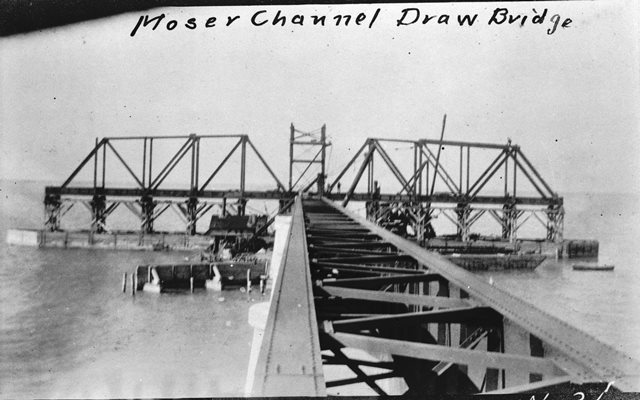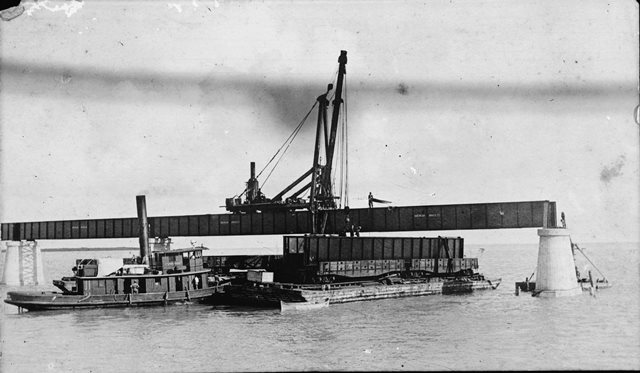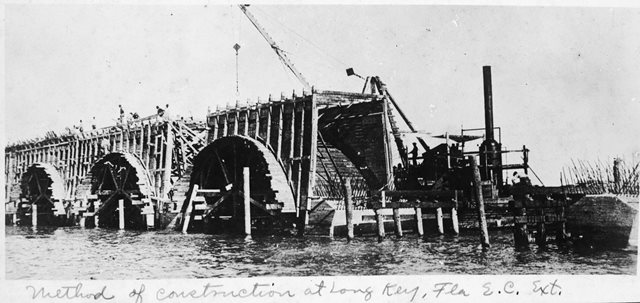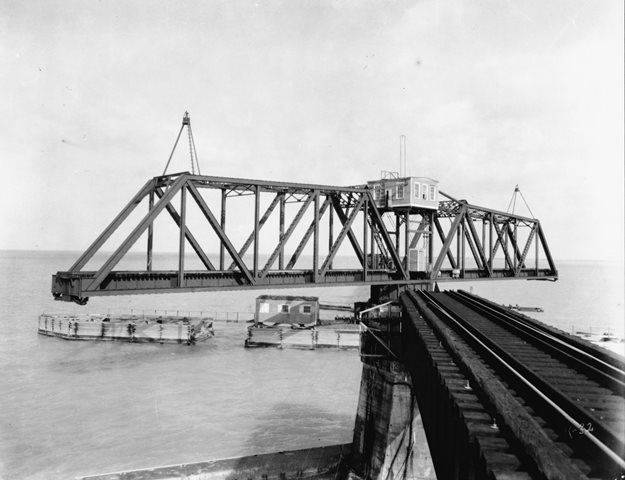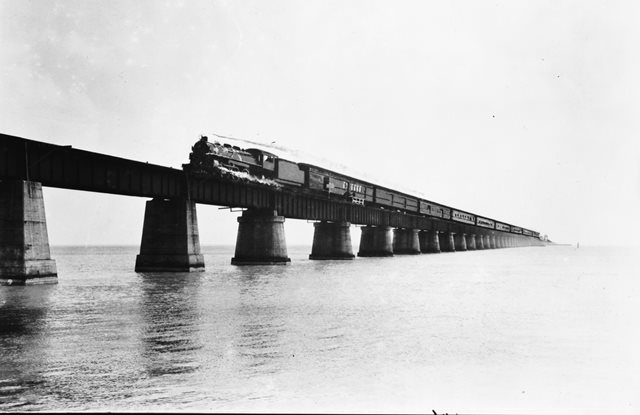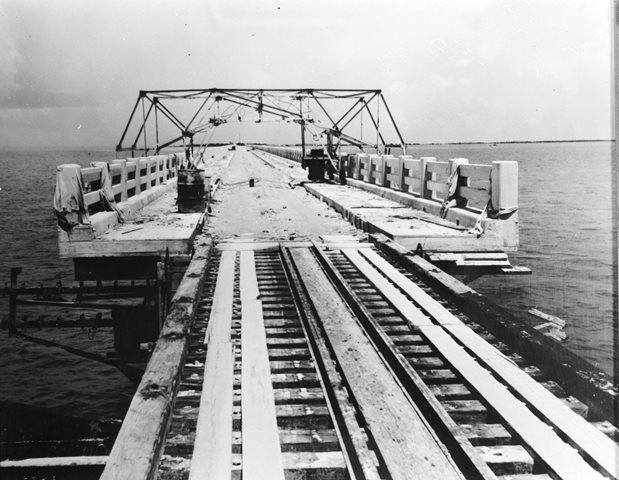We Recommend:
Bach Steel - Experts at historic truss bridge restoration.
BridgeHunter.com Phase 1 is released to the public! - Visit Now
Seven Mile Bridge
Moser Channel Bridge, Piegon Key Bridge, Knight's Key Bridge
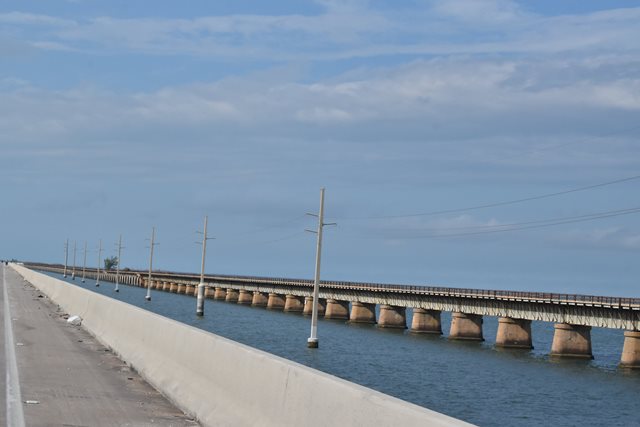
Primary Photographer(s): Nathan Holth
Bridge Documented: November 24, 2017
Pedestrian Walkway (Old US-1 Alignment, Former Railroad (Florida East Coast Railway)) Over Moser Channel
Marathon: Monroe County, Florida: United States
Metal Deck Girder, Fixed and Approach Spans: Concrete Closed Spandrel Deck Arch, Fixed
1912 By Builder/Contractor: American Bridge Company of New York, New York and Terry and Tench of New York, New York and Engineer/Design: Joseph C. Meredith and William J. Krome
1938
80.0 Feet (24.4 Meters)
35,720.0 Feet (10887.5 Meters)
Not Available
335 Main Span(s) and 210 Approach Span(s)
Not Applicable

View Information About HSR Ratings
Bridge Documentation
This bridge is the longest of the numerous bridge composing the Florida East Coast Railway Extension, which was converted to highway usage in 1938 as the initial structures for the Overseas Highway (US-1). The bridge was abandoned in 1972. One of the unique features of this bridge is that half of the bridge is composed of steel plate girder spans, and the other half is composed of concrete deck arch spans, making this a visually contrasted bridge. Roughly 9,090 feet of the bridge is concrete arch spans, while the rest of the bridge was built using steel. The differences in span type were due to issues such as water depth and wave height. Although HistoricBridges.org lists the main span design of this bridge as a metal deck girder (reflecting the bridge as seen today), the original bridge featured a through truss swing span as the main span over Moser Channel. The demolition of this swing span in 1982 is perhaps the single most devastating loss of heritage among the surviving pieces of the Florida East Coast Railway Extension in the years since the bridge structures have been abandoned from highway usage. The bridge is also missing a span near Pigeon Key. The section leading east from Pigeon Key remains in limited vehicular use as an access to Pigeon Key. A unique timber ramp structure leads up to the main bridge at Pigeon Key. A final section of bridge is missing, one of the concrete arch spans near the western end. West of the missing arch span is about 3,460 feet of the western end of the bridge which has been restored for pedestrian use as a fishing pier.
View Historic American Engineering Record (HAER) Documentation For This Bridge
HAER Data Pages, PDF - HAER Original Plan Sheets, PDF
View Historical Articles About This Bridge and the Florida East Coast Railway
View Historical Pamphlet About The Florida East Coast Railway
View National Register of Historic Places Nomination Form For This Bridge
Above: Historical photo showing swing span in its final years of usage.
Above: Historical photo showing swing span in its final years of usage.
Above: Historical photo showing swing span construction.
Above: Historical photo showing girder span construction.
Above: Historical photo showing arch span construction.
Above: Historical photo showing swing span in open position.
Above: Historical photo showing train on bridge.
Above: Historical photo showing conversion of bridge from railroad to highway use.
![]()
Photo Galleries and Videos: Seven Mile Bridge
Bridge Photo-Documentation
Original / Full Size PhotosA collection of overview and detail photos. This gallery offers photos in the highest available resolution and file size in a touch-friendly popup viewer.
Alternatively, Browse Without Using Viewer
![]()
Bridge Photo-Documentation
Mobile Optimized PhotosA collection of overview and detail photos. This gallery features data-friendly, fast-loading photos in a touch-friendly popup viewer.
Alternatively, Browse Without Using Viewer
![]()
Maps and Links: Seven Mile Bridge
Coordinates (Latitude, Longitude):
Search For Additional Bridge Listings:
Bridgehunter.com: View listed bridges within 0.5 miles (0.8 kilometers) of this bridge.
Bridgehunter.com: View listed bridges within 10 miles (16 kilometers) of this bridge.
Additional Maps:
Google Streetview (If Available)
GeoHack (Additional Links and Coordinates)
Apple Maps (Via DuckDuckGo Search)
Apple Maps (Apple devices only)
Android: Open Location In Your Map or GPS App
Flickr Gallery (Find Nearby Photos)
Wikimedia Commons (Find Nearby Photos)
Directions Via Sygic For Android
Directions Via Sygic For iOS and Android Dolphin Browser
USGS National Map (United States Only)
Historical USGS Topo Maps (United States Only)
Historic Aerials (United States Only)
CalTopo Maps (United States Only)



